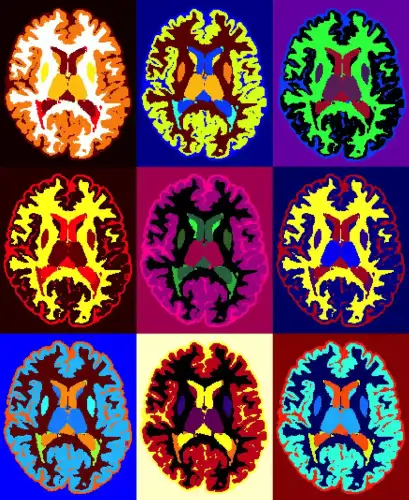
Celiac.com 10/30/2025 - This article explores research on how nutrition and physical activity can influence the experience of living with multiple sclerosis. The review brings together recent studies on different dietary approaches and forms of exercise, highlighting which choices may offer the greatest support for managing symptoms, improving daily function, and enhancing overall quality of life.
Multiple sclerosis is a long-term condition that affects the central nervous system. Medicines remain essential, but they do not always address fatigue, mood, mobility, or broader quality-of-life concerns. The review asked a practical question: can nutrition and physical activity add meaningful benefits on top of standard care, and if so, which approaches look most promising and sustainable for real people?
How The Review Was Conducted
Celiac.com Sponsor (A12):
The authors searched modern medical databases for studies published in recent years. They focused on trials and observational research that reported changes in inflammation, symptoms, function, or quality of life. They then grouped findings into two big buckets: dietary patterns and physical activity programs. The goal was not to crown a single winner, but to understand where the strongest signals appear and where caution is still needed.
What The Research Says About Eating Patterns
Mediterranean-style eating
A Mediterranean-style pattern emphasizes vegetables, fruit, legumes, whole grains, nuts, extra virgin olive oil, and regular fish, with modest dairy and very limited highly processed foods. Across studies, this way of eating is linked with lower levels of inflammation, better metabolic health, and signals of protection for brain cells. People who stick with it tend to report less fatigue and better mood, and some research suggests slower disability accumulation. It is also flexible and easier to live with than very restrictive plans, which matters for long-term success.
Ketogenic eating
A ketogenic pattern is high in fat, very low in carbohydrate, and moderate in protein. Early studies suggest it may calm inflammatory activity, improve energy handling in cells, and reduce fatigue for some people. Several reports also describe improvements in mood and self-rated quality of life. At the same time, it can be hard to sustain and may require careful medical and dietitian supervision to avoid nutrient gaps or unwanted changes in blood lipids.
Swank and Wahls approaches
The Swank approach focuses on keeping saturated fat very low while emphasizing fruits, vegetables, and whole grains. People following it often report less fatigue, though the plan may fall short on some nutrients if not planned well. The Wahls approach removes gluten, dairy, legumes, and most processed foods while pushing a very high intake of vegetables and some organ meats. Studies report improvements in fatigue and mental well-being, but the plan is demanding and can miss nutrients like calcium and vitamin B12 without guidance. Both require thoughtful planning and monitoring.
Gluten-free eating in multiple sclerosis
Research on gluten-free eating for people with multiple sclerosis who do not have celiac disease is mixed and limited. Some small studies hint at benefits, while others do not. The safest conclusion today is that a gluten-free plan is essential for people with celiac disease or confirmed gluten sensitivity, but it is not yet a general recommendation for everyone with multiple sclerosis. If tried, it should be done with a dietitian so that fiber, vitamins, and minerals remain adequate.
Fasting and time-restricted eating
Intermittent schedules, such as eating within an eight-hour window each day or following periodic fasting-mimicking cycles, show early signs of reducing inflammatory activity and improving fatigue, mood, and sometimes cognition. Many people tolerate gentle time-restricted eating better than more extreme fasting. These methods are not suitable for everyone, and medical guidance is advised, especially for those with other conditions or on certain medications.
What The Research Says About Physical Activity
Aerobic training
Regular activities such as brisk walking, cycling, or swimming can reduce systemic inflammation and consistently help with fatigue, cardiovascular fitness, and mood. Some benefits build slowly over months, so a steady habit beats short intense bursts.
Resistance training
Strength work using body weight, bands, or light weights improves muscle power, balance, and performance of daily tasks. It may reduce spasticity and fall risk when introduced gradually and supervised at first.
Sensorimotor and balance training
Targeted balance and coordination exercises deliver strong gains in quality of life for people with milder disability. These drills sharpen gait stability and confidence and can be combined with other training.
Mind–body practices
Yoga, Pilates, and Tai Chi support better emotional regulation, lower perceived stress, and reductions in fatigue. They also improve flexibility and body awareness, which can ease stiffness and reduce discomfort.
Combined programs
Mixing aerobic and resistance training tends to give the broadest benefits across endurance, strength, fatigue, and mood. For those with more advanced disability, adaptive formats such as seated strength work, aquatic exercise, or functional electrical stimulation cycling can be effective and safer.
Safety, Personalization, and Sustainability
No single plan fits everyone. People with multiple sclerosis vary widely in symptoms, energy, heat sensitivity, mobility, and life demands. The strongest results come when a plan is individualized, simple enough to live with, and supported by the care team.
- Work with professionals: A registered dietitian can protect against nutrient gaps and help tailor a plan. A physical therapist or trained coach can adapt movement to current ability and help pace activity to avoid overdoing it.
- Start low and build: Small, repeatable steps are more powerful than heroic efforts that cannot be maintained.
- Watch heat and fatigue: Exercise in cool settings, schedule rest, hydrate, and modify plans during flares or illnesses.
- Measure what matters: Track personal goals like fewer fatigue days, better sleep, steadier mood, or easier daily tasks, not only medical test results.
Key Takeaways You Can Use Now
- A Mediterranean-style pattern is the most practical everyday foundation for many people.
- Ketogenic, Swank, Wahls, gluten-free without celiac disease, and fasting methods may help selected individuals but require more guidance and caution.
- Regular movement is non-negotiable for well-being: combine aerobic, strength, and flexibility in a way that feels doable.
- Consistency beats perfection. The best plan is the one you can keep.
Why This Matters For People With Celiac Disease
If you live with celiac disease, you already know that nutrition choices shape daily life. This review adds a useful perspective: for a neurological condition like multiple sclerosis, a thoughtful eating pattern and regular movement can influence fatigue, mood, and function in meaningful ways. The lesson carries over to celiac disease in two practical ways. First, a gluten-free plan can still follow Mediterranean-style principles that are rich in fiber, healthy fats, and a rainbow of plants, which support lower inflammation and better metabolic health. Second, routine physical activity remains one of the most reliable tools for energy, sleep, and emotional balance in any chronic condition. In short, even when medical therapy is essential, everyday food and movement choices can lift quality of life. For anyone who must avoid gluten, it is reassuring to know that a well-planned gluten-free version of a Mediterranean-style pattern pairs naturally with the movement habits that this review highlights as most impactful.
Read more at: www.mdpi.com










Recommended Comments
There are no comments to display.
Create an account or sign in to comment
You need to be a member in order to leave a comment
Create an account
Sign up for a new account in our community. It's easy!
Register a new accountSign in
Already have an account? Sign in here.
Sign In Now